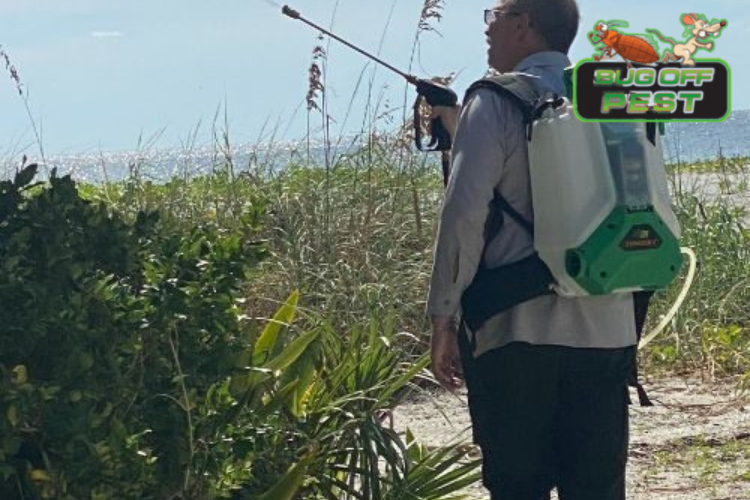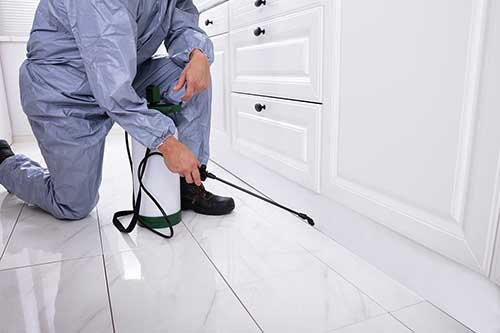Rodent Extermination with Port Charlotte Pest Control Service
Rodent Extermination with Port Charlotte Pest Control Service
Blog Article
Comprehensive Guide to Recognizing Pest Control Techniques and Their Treatment
Understanding bug control methods is crucial for reliable monitoring of undesirable microorganisms that position risks to health, farming, and home. This extensive guide will certainly discover numerous methods, consisting of chemical solutions, organic techniques, and mechanical approaches, all under the umbrella of Integrated Insect Management (IPM) As we take a look at these approaches, it ends up being increasingly clear that the choice of approach can substantially affect both human interests and eco-friendly equilibrium. What elements should be taken into consideration when picking the proper insect control technique for a specific situation? The solution might cause more lasting practices than one may initially presume.
Summary of Insect Control Techniques
Pest control techniques encompass a selection of methods made to take care of and eliminate unwanted microorganisms that can hurt human health, agriculture, and residential property. Effective bug administration is critical for keeping the stability of communities and making sure the security of food products. These approaches can be extensively classified right into three key methods: cultural, mechanical, and biological controls.

Cultural control includes changing farming practices or environmental conditions to lower parasite establishment and recreation. Mechanical control counts on physical obstacles or gadgets to prevent bug accessibility or straight remove them.
Biological control uses all-natural killers, parasites, or virus to manage pest populaces. This method stresses eco-friendly balance and can consist of presenting helpful pests, such as ladybugs or aggressive nematodes, to handle bug presence.
Integrated bug management (IPM) incorporates these strategies, using a holistic technique that highlights prevention, tracking, and responsible administration. By utilizing a blend of these techniques, pest control can be much more sustainable and reliable, minimizing dependence on chemical treatments while securing human health and wellness and the environment.

Chemical Bug Control Solutions
A variety of chemical pest control remedies are offered, offering reliable choices for managing insect populaces when other approaches might fall brief. These options primarily consist of pesticides, herbicides, fungicides, and rodenticides, each designed to target details parasites while decreasing harm to non-target organisms.
Pesticides are especially efficient against a variety of pests, consisting of ants, roaches, and termites, and can be categorized as get in touch with or systemic agents. Call pesticides kill insects on get in touch with, while systemic pesticides are absorbed by plants, making them toxic to bugs that eat them. Herbicides are utilized to manage undesirable vegetation, whereas fungicides are essential for taking care of fungal conditions that can harm plants and decorative plants.
In addition, integrated bug monitoring (IPM) principles need to be utilized, combining chemical remedies with cultural, mechanical, and biological strategies for sustainable parasite control. This alternative approach not just improves pest administration efficiency however also reduces Source prospective environmental effects linked with chemical usage.
Organic Pest Control Strategies
Biological pest control methods provide an environmentally friendly alternative to chemical methods by using all-natural predators, bloodsuckers, or virus to handle insect populations. This strategy leverages the environmental partnerships in between organisms, advertising a well balanced environment while lessening chemical deposit in the environment.
Among one of the most usual organic control methods involves the introduction of natural enemies. As an example, ladybugs are employed to regulate aphid populaces, while parasitic wasps can target caterpillars and various other bugs. These natural predators efficiently decrease pest numbers without hurting helpful bugs.
Furthermore, microbial representatives such as bacteria, fungis, and infections are utilized to contaminate and kill certain parasites. Bacillus thuringiensis (Bt), a normally taking place microorganism, is commonly made use of to control caterpillars and other larvae, showcasing the effectiveness of microbial insect control.

Physical and Mechanical Methods
Regularly utilized in incorporated insect monitoring methods, physical and mechanical approaches act as effective tools for managing parasite populations without making use of chemicals. These methods count on physical barriers, catches, and various other mechanical gadgets to avoid from this source or remove parasites, making them environmentally pleasant choices.
Physical methods include the use of obstacles such as insect netting, screens, or row covers that literally block parasites from accessing plants. This is especially valuable in farming settings where plant defense is essential. In addition, environment control, such as getting rid of debris and standing water, can lower bug reproducing websites, thus reducing invasions.
Mechanical techniques incorporate traps, which can be designed to capture details pests. Sticky catches and pheromone catches are common examples that draw and keep insects, helping with monitoring and control. Vacuuming is one more mechanical method, effective for getting rid of insects from interior environments, specifically in instances of problems.
Preventative Insect Monitoring Strategies
Effective preventative parasite management methods are necessary for keeping healthy environments and reducing pest-related issues prior to they occur (Pest Control in Port Charlotte, FL). These methods concentrate on aggressive measures that reduce the possibility of pest infestations by dealing with the origin

One more vital method entails proper landscape design techniques (Pest Control in Port Charlotte, FL). Keeping plant life trimmed and away from structures can decrease harborage areas for pests. Applying integrated pest management (IPM) strategies that consist of keeping an eye on pest populations and employing biological controls can promote a balanced ecosystem that normally subdues pest numbers.
Education and learning and training for personnel and citizens on recognizing very early signs of insect activity are also crucial parts of an efficient preventative program. By cultivating a setting of understanding and vigilance, organizations and home owners can significantly improve their parasite monitoring efforts and protect their areas against future invasions.
Verdict
Employing an Integrated Pest Management (IPM) structure enables for the lasting administration of parasites while decreasing environmental effect. Eventually, a detailed understanding of these varied insect control techniques is essential blog here for accomplishing successful end results in pest monitoring efforts.
Report this page